Top 10 Most Famous Cathedrals In England
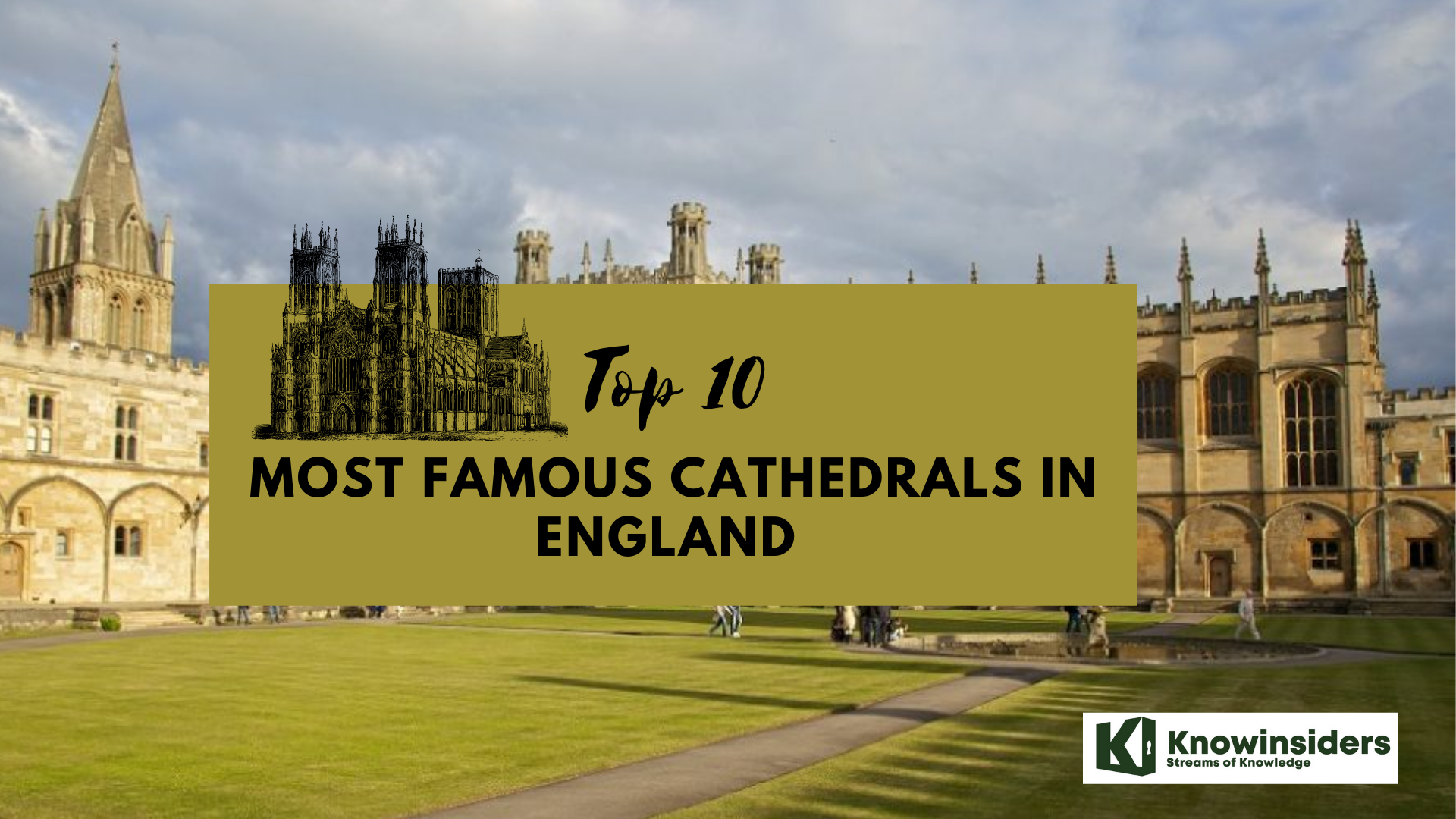 |
| Top 10 most famous cathedrals in England |
As well as hosting the weddings and funerals of the kings and queens of England, the best English cathedrals, as well as smaller churches, chapels, and crypts have been featured in famous works of art and literature as well as in popular Hollywood film franchises.
Notably, the incredible Gloucester Cathedral was featured as a set in several of the Harry Potter films and is high on the list to visit for any Harry Potter fans.
England’s finest churches are typically in Norman or Gothic architecture, but a few are more modern, featuring works of modern art or neoclassical architecture.
Let’s take a look at these 10 most famous cathedrals in England
The List of top 10 most famous cathedrals in England
10. Winchester Cathedral
9. Gloucester Cathedral
8. Salisbury Cathedral
7. Durham Cathedral
6. St. Paul’s Cathedral
5. Coventry Cathedral
4. Christchurch Cathedral of Oxford
3. Liverpool Catholic Cathedral
2. Canterbury Cathedral
1. York Minster
What are the top 10 most famous cathedrals in England?
10. Winchester Cathedral
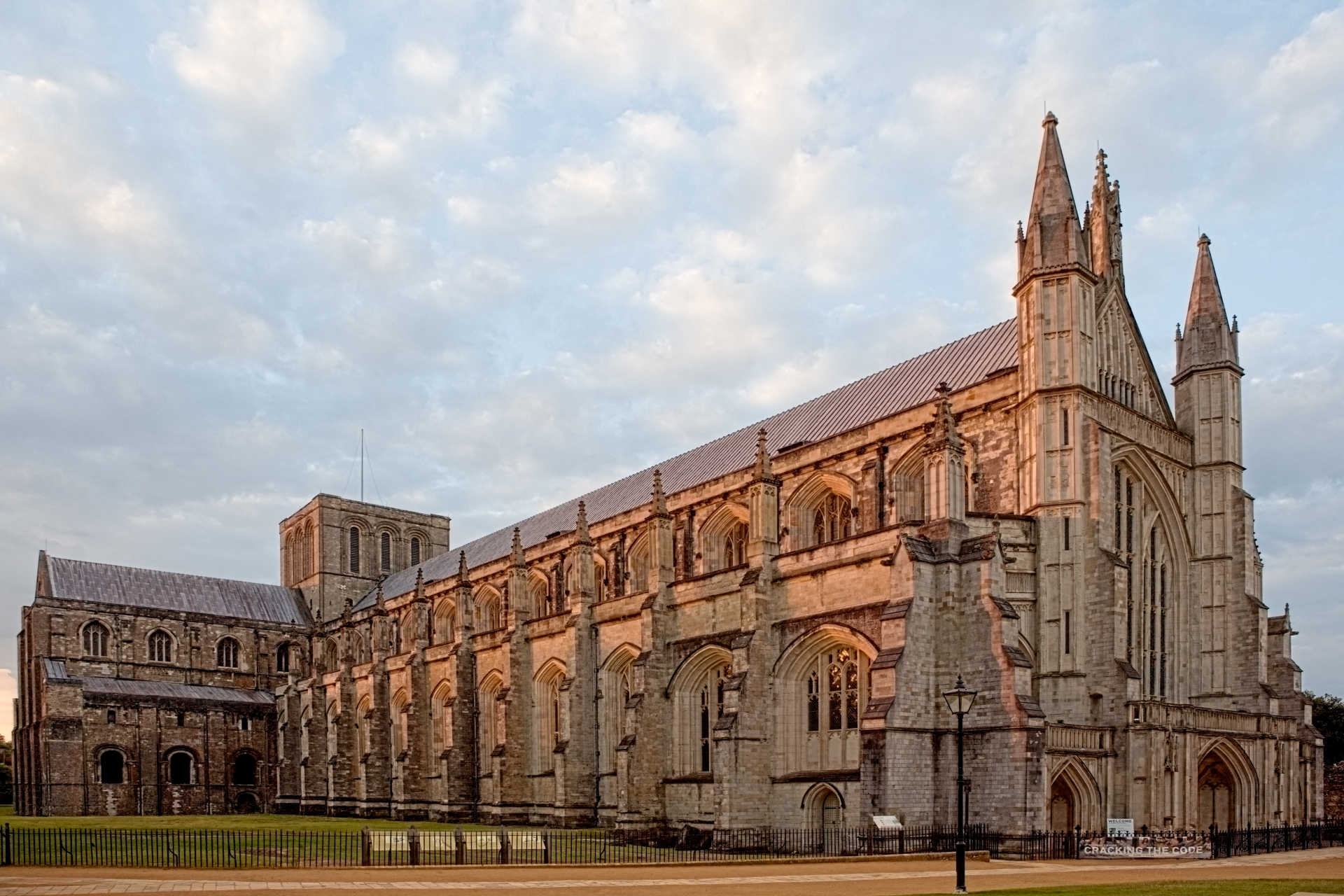 |
| Photo: Wikipedia |
Winchester Cathedral is a cathedral of the Church of England in Winchester, Hampshire, England. It is one of the largest cathedrals in Europe, with the greatest overall length of any Gothic cathedral.
Dedicated to the Holy Trinity, Saint Peter, Saint Paul and, before the Reformation, Saint Swithun, it is the seat of the Bishop of Winchester and centre of the Diocese of Winchester. The cathedral is a Grade I listed building.
Nowadays the cathedral draws many tourists as a result of its association with Jane Austen, who died in Winchester on 18 July 1817. Her funeral was held in the cathedral, and she was buried in the north aisle. The inscription on her tombstone makes no mention of her novels, but a later brass tablet, paid for from the proceeds of her first biography, describes her as "known to many by her writings". There is also a memorial window in her honour by C E Kempe.
Having spent three years in the city as a child, the novelist Anthony Trollope borrowed features of the cathedral and the city for his Chronicles of Barsetshire. In 2005, the building was used as a film set for The Da Vinci Code, with the north transept used as the Vatican. Following this, the cathedral hosted discussions and displays to debunk the book.
Winchester Cathedral is possibly the only cathedral to have had popular songs written about it. "Winchester Cathedral" was a UK top ten hit and a US number one song for The New Vaudeville Band in 1966. The cathedral was also the subject of the Crosby, Stills & Nash song "Cathedral" from their 1977 album CSN. Liverpool-based band Clinic released an album titled Winchester Cathedral in 2004.
In 1992, the British rosarian David Austin introduced a white sport of his rose cultivar "Mary Rose" (1983) as "Winchester Cathedral".
When he was posted to England during the First World War, Bill Wilson, the co-founder of Alcoholics Anonymous, visited the Cathedral and had an initial experience of the presence of God.
The Cathedral is the starting point of the 34-mile-long St Swithun's Way a Long-distance footpath which was opened in 2002 to commemorate the Golden Jubilee of Elizabeth II.
The Cathedral and surrounding area has been used multiple times as a filming location for The Crown, a popular Netflix historical drama series based on the monarchy during the time of Queen Elizabeth II’s reign. The interior has been used as a substitute for both Westminster Abbey (for the funeral of Lord Louis Mountbatten in Season 4) and St Paul’s Cathedral (for Sir Winston Churchill’s funeral in Season 3 and for Prince Charles and Lady Diana Spencer’s wedding rehearsals and subsequent wedding in Season 4).
9. Gloucester Cathedral
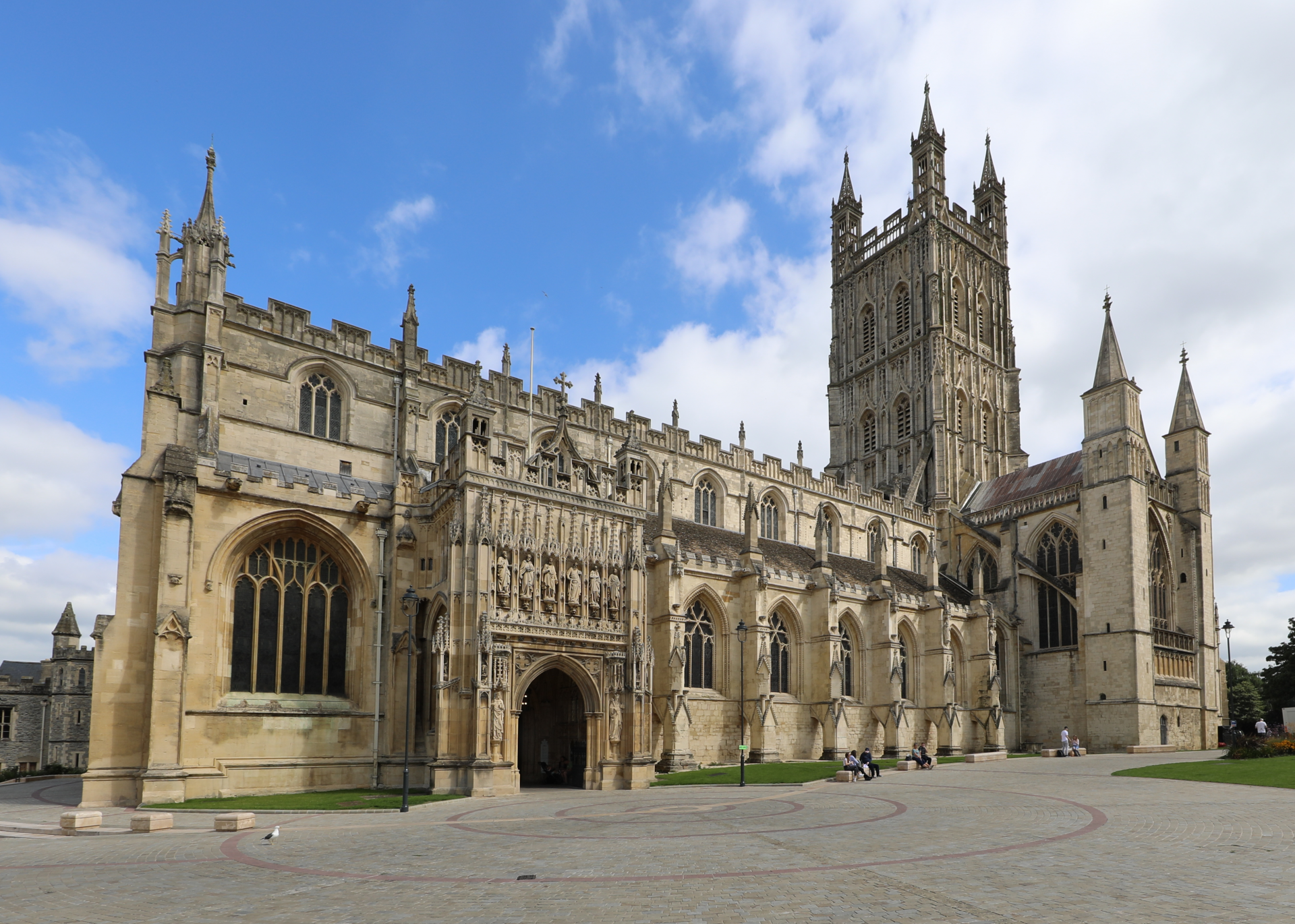 |
| Photo: Wikipedia |
The magnificence of Gloucester, which only became a cathedral under Henry VIII, owes much to the courage of one man, Abbot Thoky. When Edward II was murdered at nearby Berkeley Castle in 1327, three other abbots refused to accept the king's remains, possibly because they disapproved of his reported "unnatural" lifestyle. Thoky accepted the body, risking the displeasure of Edward's many enemies.
The origins of Gloucester Cathedral go back in time well before Thoky became abbot. There was a religious community here, first recorded in 681AD. Sometime in the early 11th century, this became a Benedictine monastery. The first abbot was Serlo, appointed in 1072 by William the Conqueror.
One of the most famous Deans of Gloucester was William Laud, better known to history as Archbishop Laud. The cathedral underwent a major restoration in the Victorian era, as many churches did. This was carried out from 1847, partly under the direction of famed Victorian architect Sir George Gilbert Scott.
One of the most enjoyable features at Gloucester Cathedral is the medieval monastic cloisters, familiar to viewers of the Harry Potter series of films. There is glorious fan vaulting throughout, and it is not surprising that the vaulting at Gloucester was the earliest use of fan vaulting in England, and influenced countless other Perpendicular Gothic buildings throughout the late medieval period.
8. Salisbury Cathedral
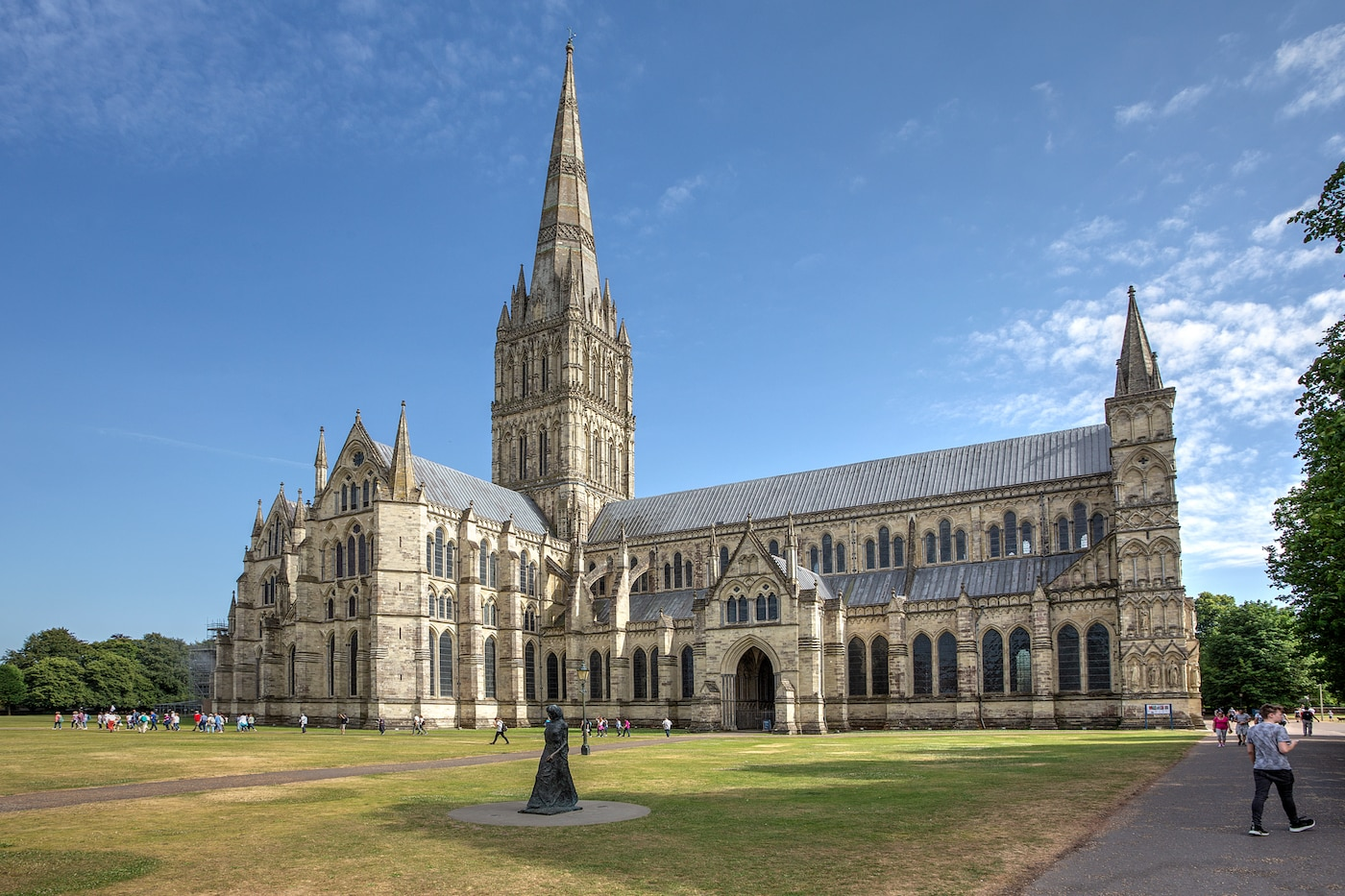 |
| Photo: Getty Images |
One factor that enabled Salisbury Cathedral to become so extraordinary is that it was the first major cathedral to be built on an unobstructed site. The architect and clerics were able to conceive a design and lay it out exactly as they wanted. Construction was carried out in one campaign, giving the complex a cohesive motif and singular identity. The cloisters were started as a purely decorative feature only five years after the cathedral building was completed, with shapes, patterns, and materials that copy those of the cathedral interior.
It was an ideal opportunity in the development of Early English Gothic architecture, and Salisbury Cathedral made full use of the new techniques of this emerging style. Pointed arches and lancet shapes are everywhere, from the prominent west windows to the painted arches of the east end. The narrow piers of the cathedral were made of cut stone rather than rubble-filled drums, as in earlier buildings, which changed the method of distributing the structure’s weight and allowed for more light in the interior. The piers are decorated with slender columns of dark gray Purbeck marble, which reappear in clusters and as stand-alone supports in the arches of the triforium, clerestory, and cloisters. The triforium and cloisters repeat the same patterns of plate tracery – basically stone cut-out shapes – of quatrefoils, cinquefoils, even hexafoils and octofoils. Proportions are uniform throughout.
Over the centuries the cathedral has been subject to well-intentioned, but heavy-handed restorations by later architects such as James Wyatt and Sir George Gilbert Scott, who tried to conform the building to contemporary tastes. Therefore, the interior has lost some of its original decoration and furnishings, including stained glass and small chapels, and new things have been added. This is pretty typical, though, of a building that is several centuries old. Fortunately, the regularity and clean lines of the cathedral have not been tampered with. It is still refined, polished, and generally easy on the eye.
7. Durham Cathedral
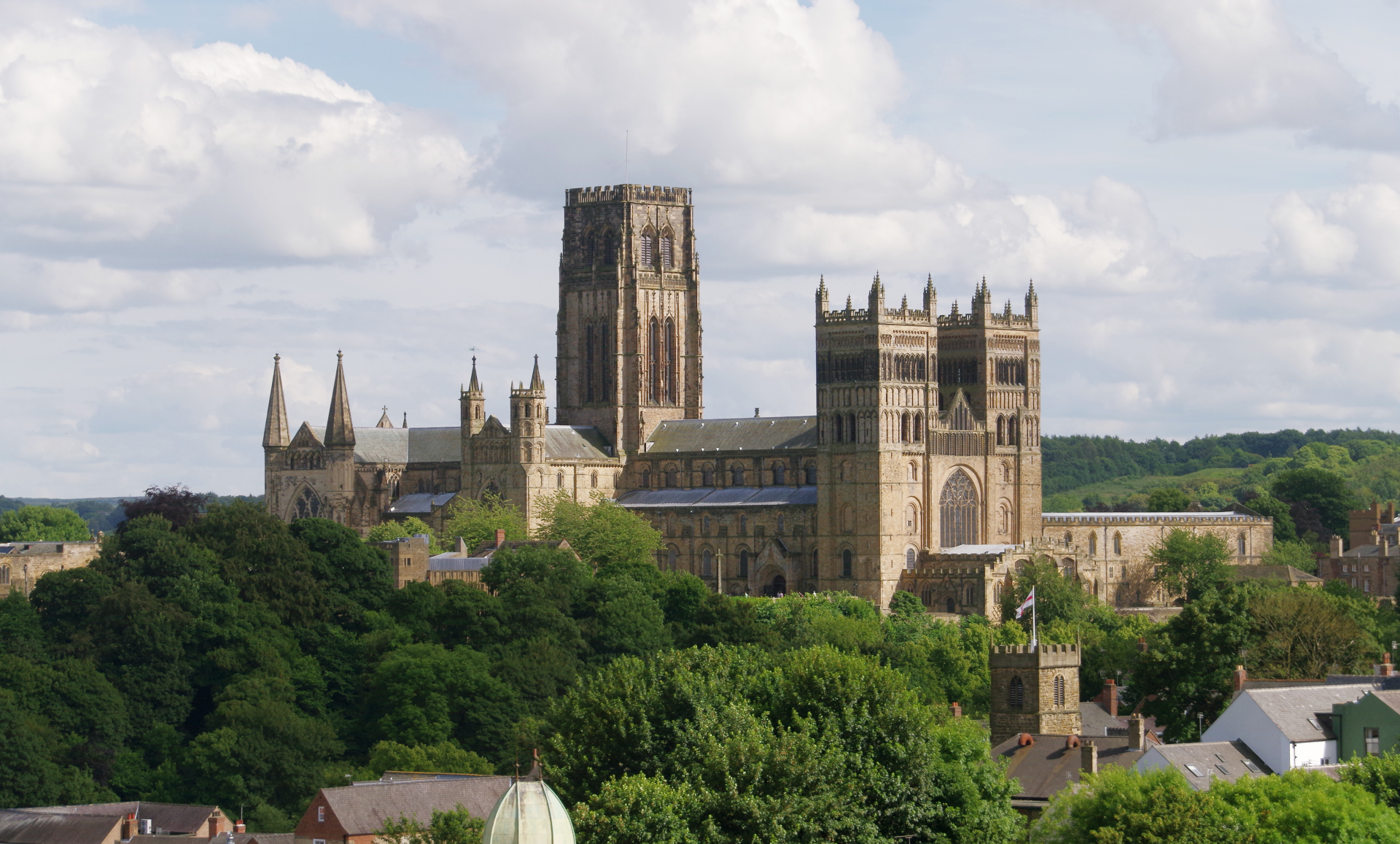 |
| Photo: Wikipedia |
The Cathedral Church of Christ, Blessed Mary the Virgin and St Cuthbert of Durham, commonly known as Durham Cathedral and home of the Shrine of St Cuthbert, is a cathedral in the city of Durham, England. It is the seat of the Bishop of Durham, the fourth-ranked bishop in the Church of England hierarchy.
The present Norman era cathedral had started to be built in 1093, replacing the city's previous 'White Church'. In 1986 the cathedral and Durham Castle were designated a UNESCO World Heritage Site. Durham Cathedral's relics include: Saint Cuthbert's, transported to Durham by Lindisfarne monks in the 800s; Saint Oswald's head and the Venerable Bede's remains.
The Durham Dean and Chapter Library contains: sets of early printed books, some of the most complete in England; the pre-Dissolution monastic accounts and three copies of Magna Carta.
From 1080 until 1836, the Bishop of Durham held the powers of an Earl Palatine. In order to protect the Anglo-Scottish border: powers of an earl included exercising military, civil and religious leadership. The cathedral walls formed part of Durham Castle, the chief seat of the Bishop of Durham.
There are daily Church of England services at the cathedral, Durham Cathedral Choir sing daily except Mondays and holidays, receiving 727,367 visitors in 2019.
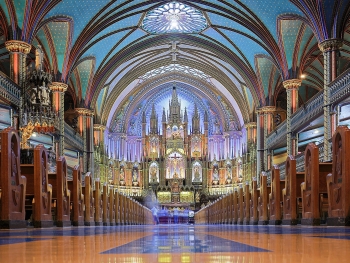 TOP 9 Most Beautiful Churches in the World TOP 9 Most Beautiful Churches in the World Churches could be considered some of the oldest and most breathtaking art and architecture throughout our human's history. Let's take a look at top 9 ... |
6. St. Paul’s Cathedral
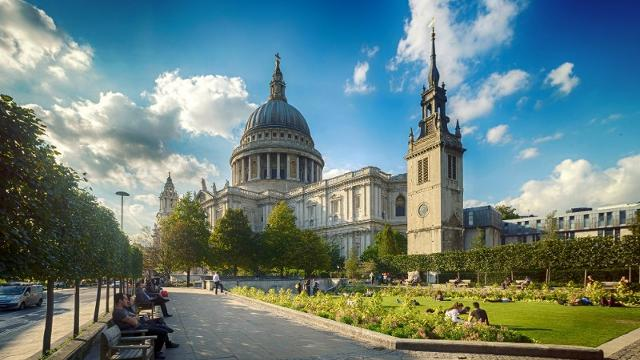 |
| Photo: VisitLondon |
St Paul's Cathedral is an Anglican cathedral in London. As the seat of the Bishop of London, the cathedral serves as the mother church of the Diocese of London. It sits on Ludgate Hill at the highest point of the City of London and is a Grade I listed building. Its dedication to Paul the Apostle dates back to the original church on this site, founded in AD 604. The present structure, dating from the late 17th century, was designed in the English Baroque style by Sir Christopher Wren. Its construction, completed in Wren's lifetime, was part of a major rebuilding programme in the City after the Great Fire of London. The earlier Gothic cathedral (Old St Paul's Cathedral), largely destroyed in the Great Fire, was a central focus for medieval and early modern London, including Paul's walk and St Paul's Churchyard being the site of St Paul's Cross.
The cathedral is one of the most famous and most recognisable sights of London. Its dome, framed by the spires of Wren's City churches, has dominated the skyline for over 300 years. At 365 feet (111 m) high, it was the tallest building in London from 1710 to 1963. The dome remains among the highest in the world. St Paul's is the second-largest church building in area in the United Kingdom after Liverpool Cathedral.
Services held at St Paul's have included the funerals of Admiral Nelson, the Duke of Wellington, Winston Churchill and Margaret Thatcher; jubilee celebrations for Queen Victoria; peace services marking the end of the First and Second World Wars; the wedding of Prince Charles and Lady Diana Spencer; the launch of the Festival of Britain; and the thanksgiving services for the Silver, Golden and Diamond Jubilees and the 80th and 90th birthdays of Queen Elizabeth II.
5. Coventry Cathedral
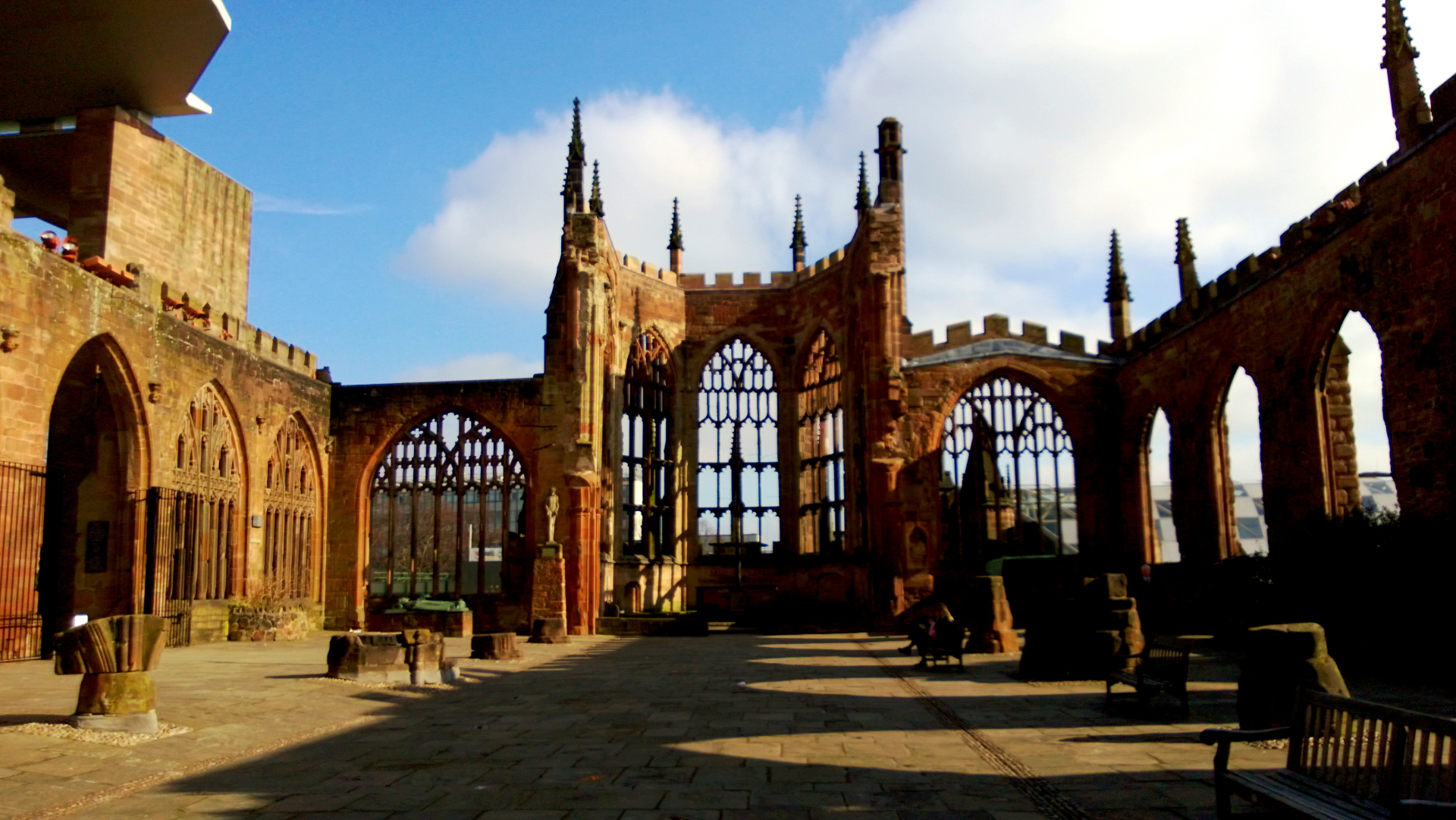 |
| Photo: Art History Abroad |
The Cathedral Church of Saint Michael, commonly known as Coventry Cathedral, is the seat of the Bishop of Coventry and the Diocese of Coventry within the Church of England. The cathedral is located in Coventry, West Midlands, England. The current bishop is Christopher Cocksworth and the current dean is John Witcombe.
The city has had three cathedrals. The first was St Mary's, a monastic building, of which only a few ruins remain. The second was St Michael's, a 14th-century Gothic church later designated as a cathedral, which remains a ruined shell after its bombing during the Second World War. The third is the new St Michael's Cathedral, built immediately adjacent after the destruction of the former.
4. Christchurch Cathedral of Oxford
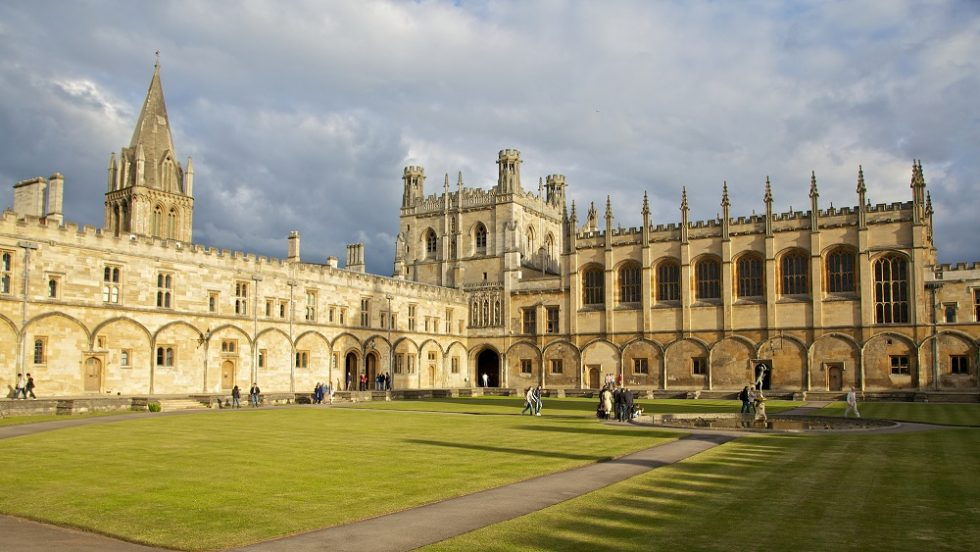 |
| Photo: Gilbertscott |
Christ Church Cathedral is the cathedral of the Anglican diocese of Oxford, which consists of the counties of Oxfordshire, Buckinghamshire and Berkshire. It is also the chapel of Christ Church at the University of Oxford. This dual role as cathedral and college chapel is unique in the Church of England.
The cathedral was originally the church of St Frideswide's Priory. The site was historically presumed to be the location of the nunnery founded by St Frideswide, the patron saint of Oxford, and the shrine now in the Latin Chapel, originally containing relics translated at the rebuilding in 1180, was the focus of pilgrimage from at least the 12th until the early 16th century.
In 1522, the priory was surrendered to Cardinal Thomas Wolsey, who had selected it as the site for his proposed college. However, in 1529 the foundation was taken over by Henry VIII. Work stopped, but in June 1532 the college was refounded by the King. In 1546, Henry VIII transferred to it the recently created See of Oxford from Osney. The cathedral has the name of Ecclesia Christi Cathedralis Oxoniensis, given to it by Henry VIII's foundation charter.
There has been a choir at the cathedral since 1526, when John Taverner was the organist and also master of the choristers. The statutes of Wolsey's original college, initially called “Cardinal College”, mentioned 16 choristers and 30 singing priests.
Christ Church Cathedral is one of the smallest cathedrals in the Church of England.
3. Liverpool Catholic Cathedral
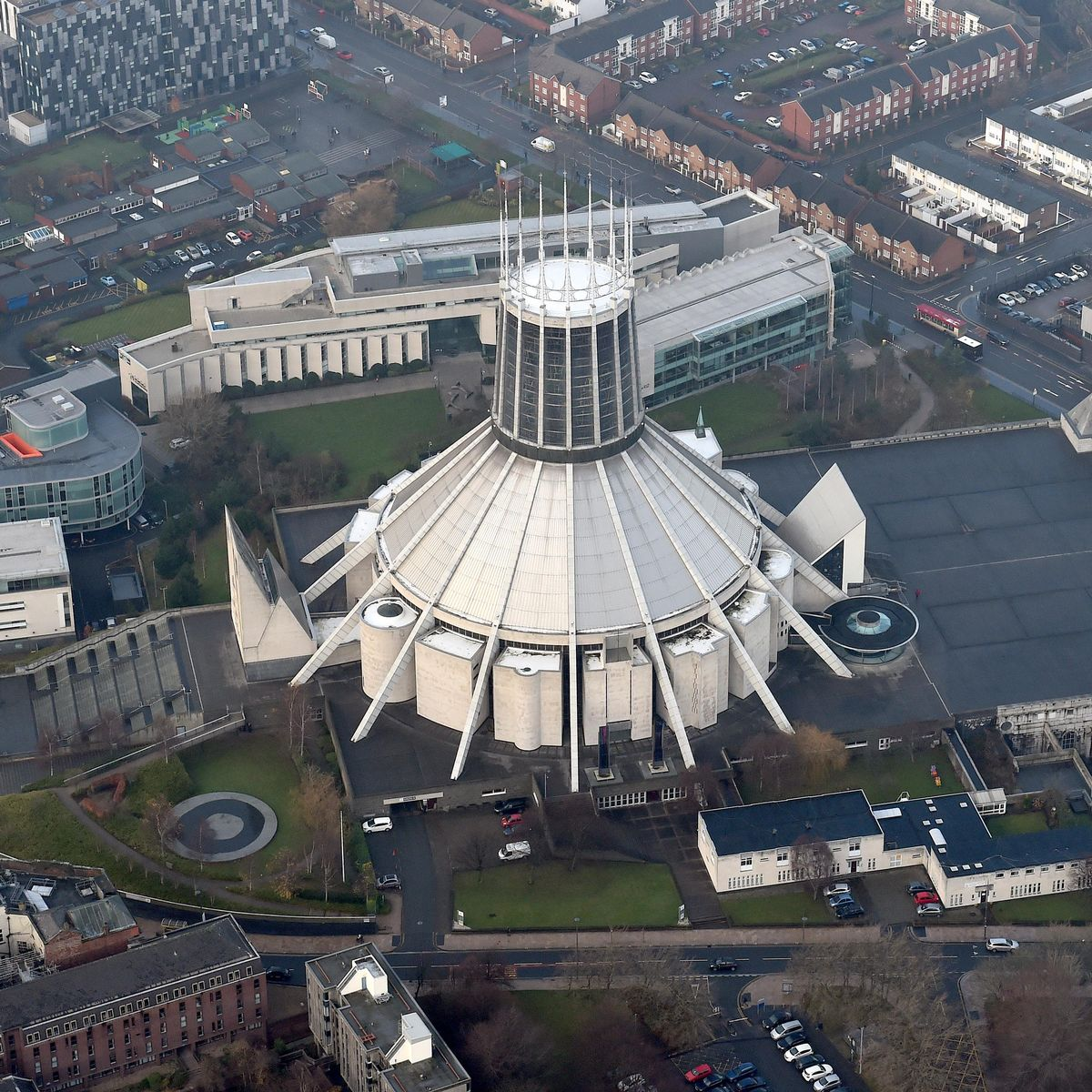 |
| Photo: Liverpool Echo |
Located in an elevated position, high above the city, Liverpool Metropolitan Cathedral offers visitors a sacred space in which to pause for reflection and to find spiritual solace.
Enjoy the silence. Feel welcome in worship. Or perhaps join one of their tours. Whatever your reasons for visiting, you’ll find a wonderfully Christian welcome at Liverpool Metropolitan Cathedral. Whatever your faith, your nationality or your social status, Britain’s largest Catholic Cathedral will open its arms to embrace you as a friend. Located in the heart of Liverpool’s University district, the Liverpool Metropolitan Cathedral has become an iconic landmark loved by people of all ages.
At the heart of the community, Liverpool Metropolitan Cathedral offers a programme of intimate and welcoming services which all members of the public are welcome to join, in the hope that you will leave feeling uplifted and inspired. Even if you just wish to marvel at the modern architecture of the Cathedral, to enjoy the spectacular light reflected though the lantern tower, or to explore the amazing Lutyens Crypt, the Cathedral Dean, Canon Anthony O’Brien, wants you to feel at home in this peaceful sanctuary.
Whether you come to attend mass, to explore the building, or even to be in the audience for one of the many special events or music concerts that take place in this glorious venue, The Metropolitan Cathedral of Christ the King is waiting to welcome you.
2. Canterbury Cathedral
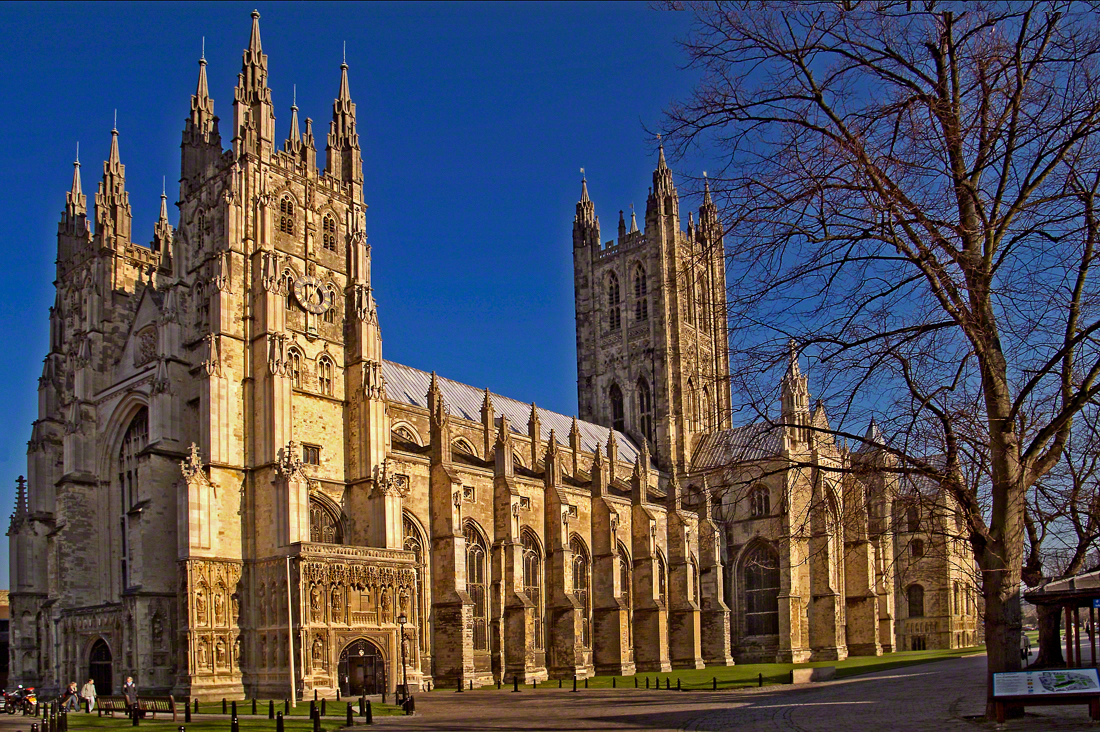 |
| Photo: Wikipedia |
Canterbury Cathedral in Canterbury, Kent, is one of the oldest and most famous Christian structures in England. It forms part of a World Heritage Site. It is the cathedral of the Archbishop of Canterbury, currently Justin Welby, leader of the Church of England and symbolic leader of the worldwide Anglican Communion. Its formal title is the Cathedral and Metropolitical Church of Christ at Canterbury.
Founded in 597, the cathedral was completely rebuilt between 1070 and 1077. The east end was greatly enlarged at the beginning of the 12th century and largely rebuilt in the Gothic style following a fire in 1174, with significant eastward extensions to accommodate the flow of pilgrims visiting the shrine of Thomas Becket, the archbishop who was murdered in the cathedral in 1170. The Norman nave and transepts survived until the late 14th century when they were demolished to make way for the present structures.
Before the English Reformation the cathedral was part of a Benedictine monastic community known as Christ Church, Canterbury, as well as being the seat of the archbishop.
1. York Minster
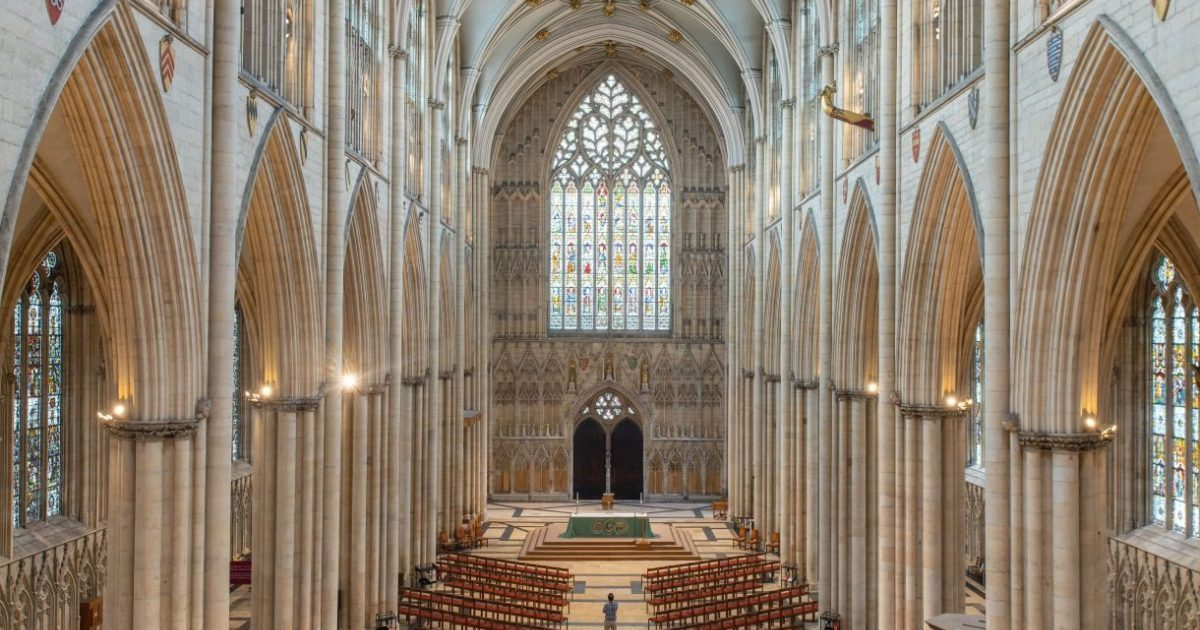 |
| Photo: Visit York |
The Cathedral and Metropolitical Church of Saint Peter in York, commonly known as York Minster, is the cathedral of York, England, and is one of the largest of its kind in Northern Europe. The minster is the seat of the Archbishop of York, the third-highest office of the Church of England (after the monarch as Supreme Governor and the Archbishop of Canterbury), and is the mother church for the Diocese of York and the Province of York. It is run by a dean and chapter, under the Dean of York. The title "minster" is attributed to churches established in the Anglo-Saxon period as missionary teaching churches, and serves now as an honorific title. Services in the minster are sometimes regarded as on the High Church or Anglo-Catholic end of the Anglican continuum.
The minster was completed in 1472 after several centuries of building. It is devoted to Saint Peter, and has a very wide Decorated Gothic nave and chapter house, a Perpendicular Gothic quire and east end and Early English North and South transepts. The nave contains the West Window, constructed in 1338, and over the Lady Chapel in the east end is the Great East Window (finished in 1408), the largest expanse of medieval stained glass in the world. In the north transept is the Five Sisters Window, each lancet being over 53 feet (16.3 m) high. The south transept contains a rose window, while the West Window contains a heart-shaped design colloquially known as The Heart of Yorkshire.
 Top 10 Most Notorious Female Pirates Of All Time Top 10 Most Notorious Female Pirates Of All Time Even though piracy was an occupation dominated by men, there have been a number of women who found success in it. Take a look at ... |
 Top 10 Most Expensive Red Carpet Jewelleries Of All Time Top 10 Most Expensive Red Carpet Jewelleries Of All Time Jewelleries show who you are and how much money you have. Check out top 10 most expensive red carpet jewelleries of all time. |
 Top 10 Most Expensive Photographs Ever Sold In The World Top 10 Most Expensive Photographs Ever Sold In The World Photograph is an expensive hobby, and the artists create the best works from their lenses. Here is the top 10 most expensive photographs ever sold. |
 Top 10 Most Luxurious and Expensive Helicopters In The World Top 10 Most Luxurious and Expensive Helicopters In The World Helicopters are not unfamiliar to most of us, but some of them are specially made with high quality materials, advanced technology and durable for different ... |


























